TABLE OF CONTENTS
PSU cooling, not exactly something that’s talked about a lot.
When it comes to cooling, the CPU and GPU usually dominate the conversation. But are we leaving performance on the table by disregarding the PSU?
Does PSU fan positioning really matter?
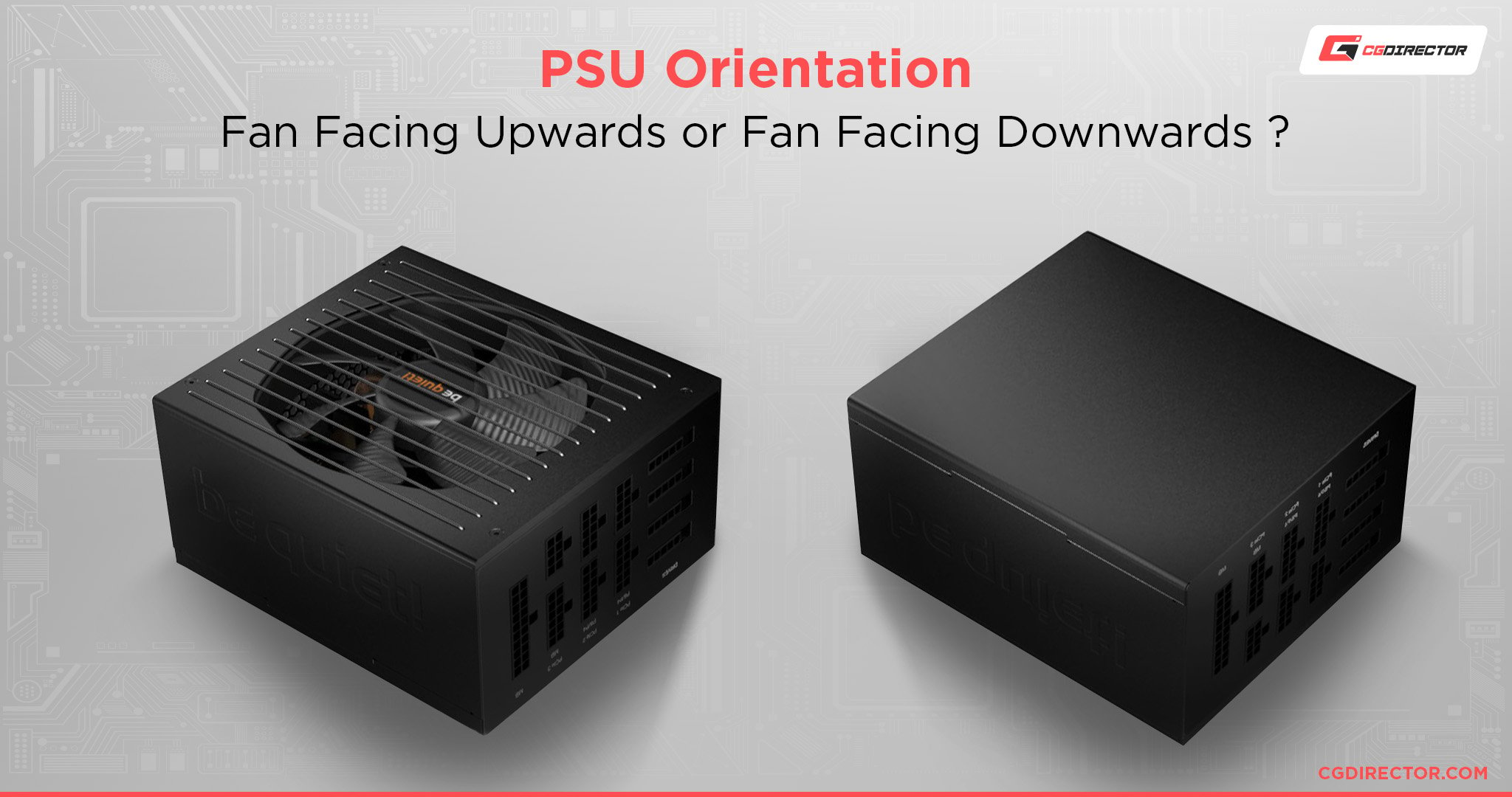
Short answer: For most people, no, it doesn’t. But if you want to learn more about why it doesn’t matter for most people and want help figuring out if you would benefit from a different configuration, read on.
What’s the Difference?
Well, as you can probably guess, the biggest difference is fan positioning.
One sect of people swears by having the fan facing up, drawing air in from the case, and exhausting it out the back. They say it helps dissipate the hot air inside the case quickly.
Basically, sacrificing a little cooling for the PSU to try and cool the other components.
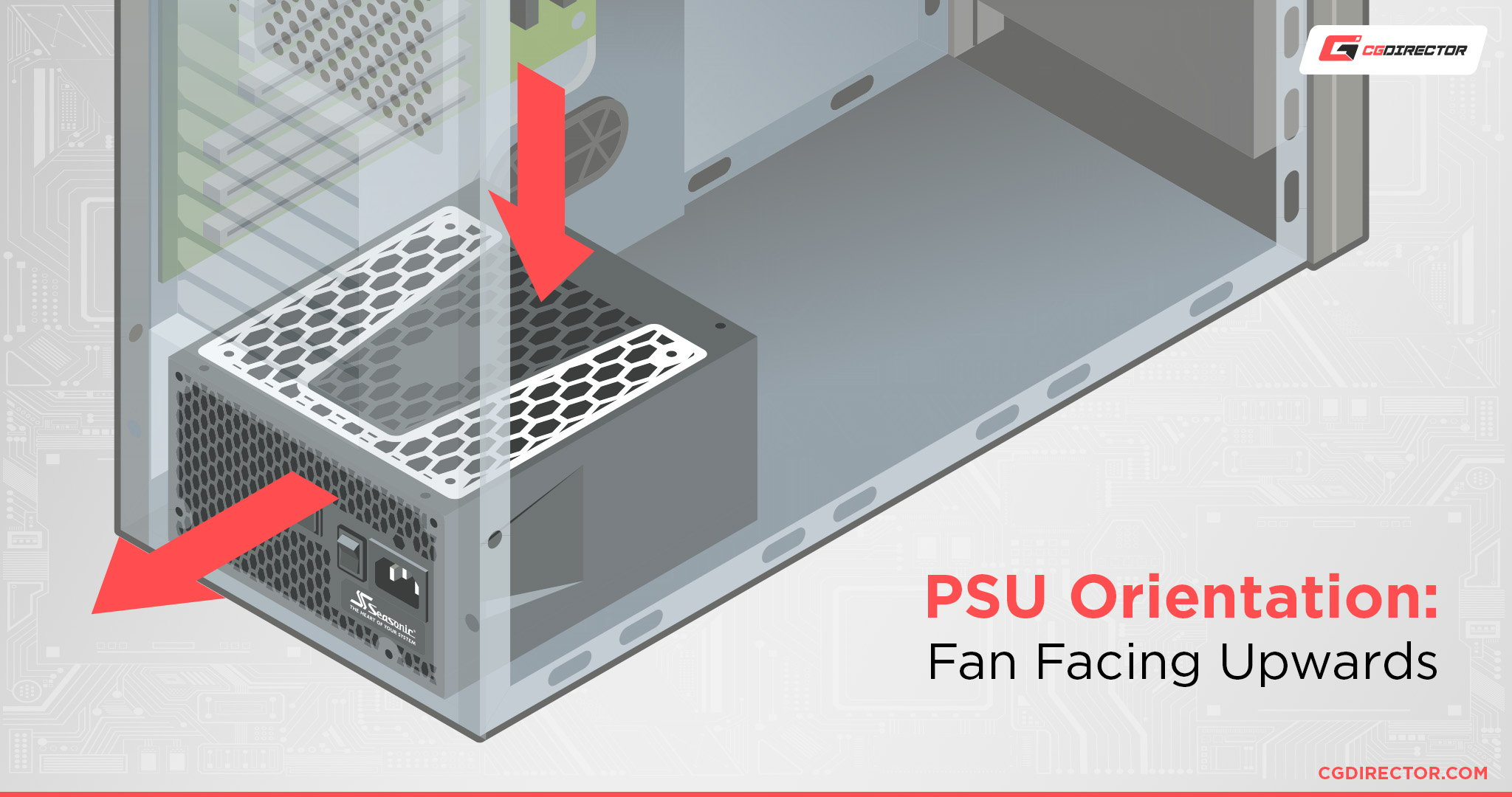
And then others swear that the best thing to do is to have the PSU draw air from the bottom of the case so that it can get fresh air from outside the case and keep cool.
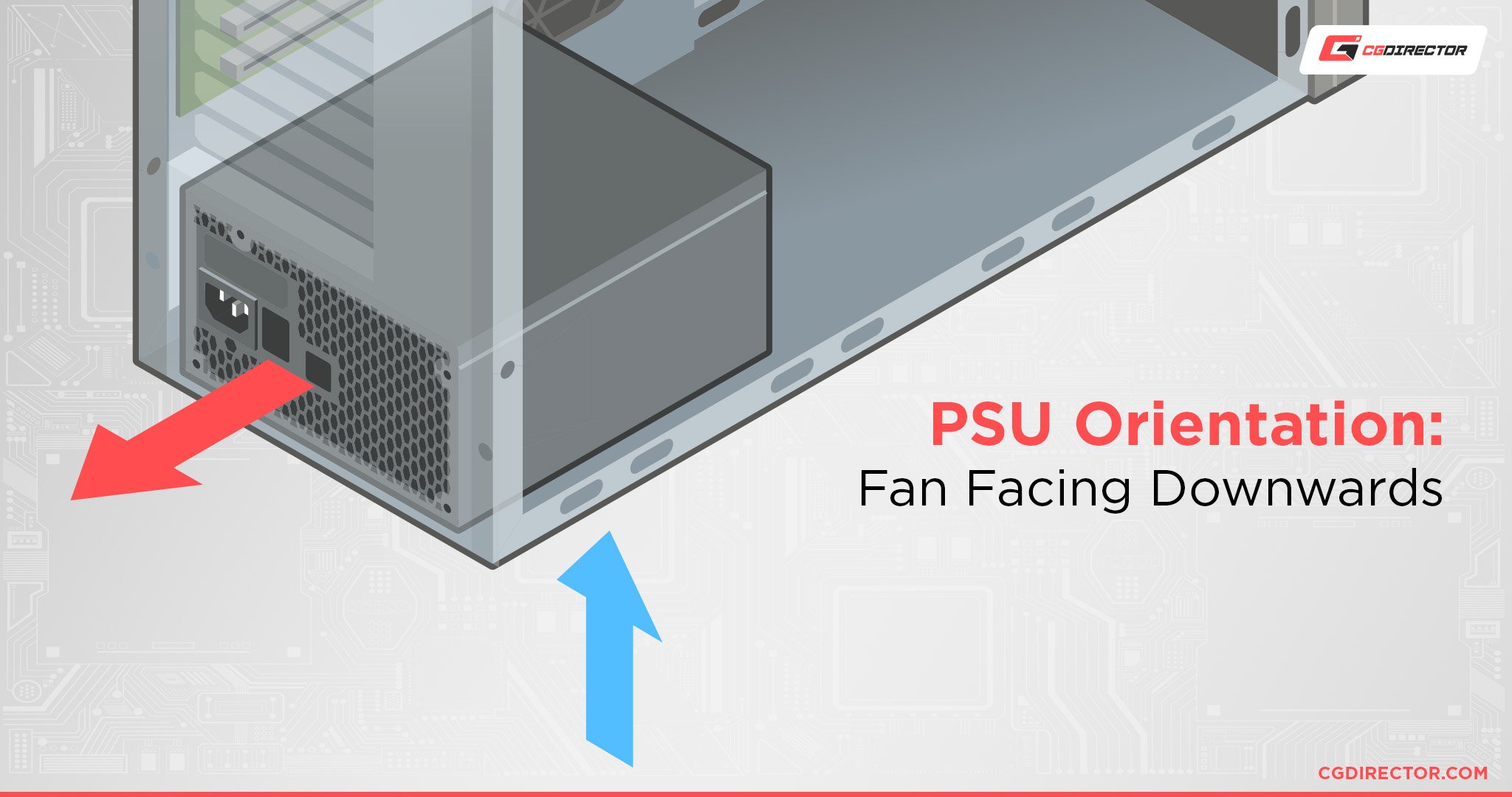
But the basic truth is that it really doesn’t matter. Yes, depending on the case, one way could be better than the other, technically.
But the actual difference amounts to around 0 – 2°C difference in the internal temperature of the case, almost no difference in cooling the CPU or GPU, and around 0 – 10°C difference in PSU temperature.
But isn’t a difference of 10°C in the PSU significant?
Not really. To a PSU, the difference between 40°C and 50°C is a moot point. It’ll still function just fine.
Which is in contrast to the CPU or GPU where 10°C can be a decent bit of performance lost/gained.
Unless your PSU is regularly going above 60°C, it doesn’t really matter if it is 10°C hotter or colder.
When to Have the PSU Fan Facing Up
The only real reason you should have your PSU facing up is when your case doesn’t have any ventilation on the bottom.
So if your PSU can’t draw in air from the bottom of the case, the only other option is to have it draw in air from within the case.
Besides heating up your PSU, drawing air in from within the case and exhausting it out the back doesn’t have a noticeable impact on the performance of your other components.
So there’s no point in having it facing up unless you literally don’t have a way for the PSU to intake air in from the bottom.
Thankfully, however, most cases these days have ventilation areas with mesh filters at the bottom.
When to Have the PSU Fan Facing Down
Any time you build a PC, pretty much. Unless you’re working with an old PC or an office-oriented, pre-built PC, you will most likely have ventilation areas at the bottom of the case.
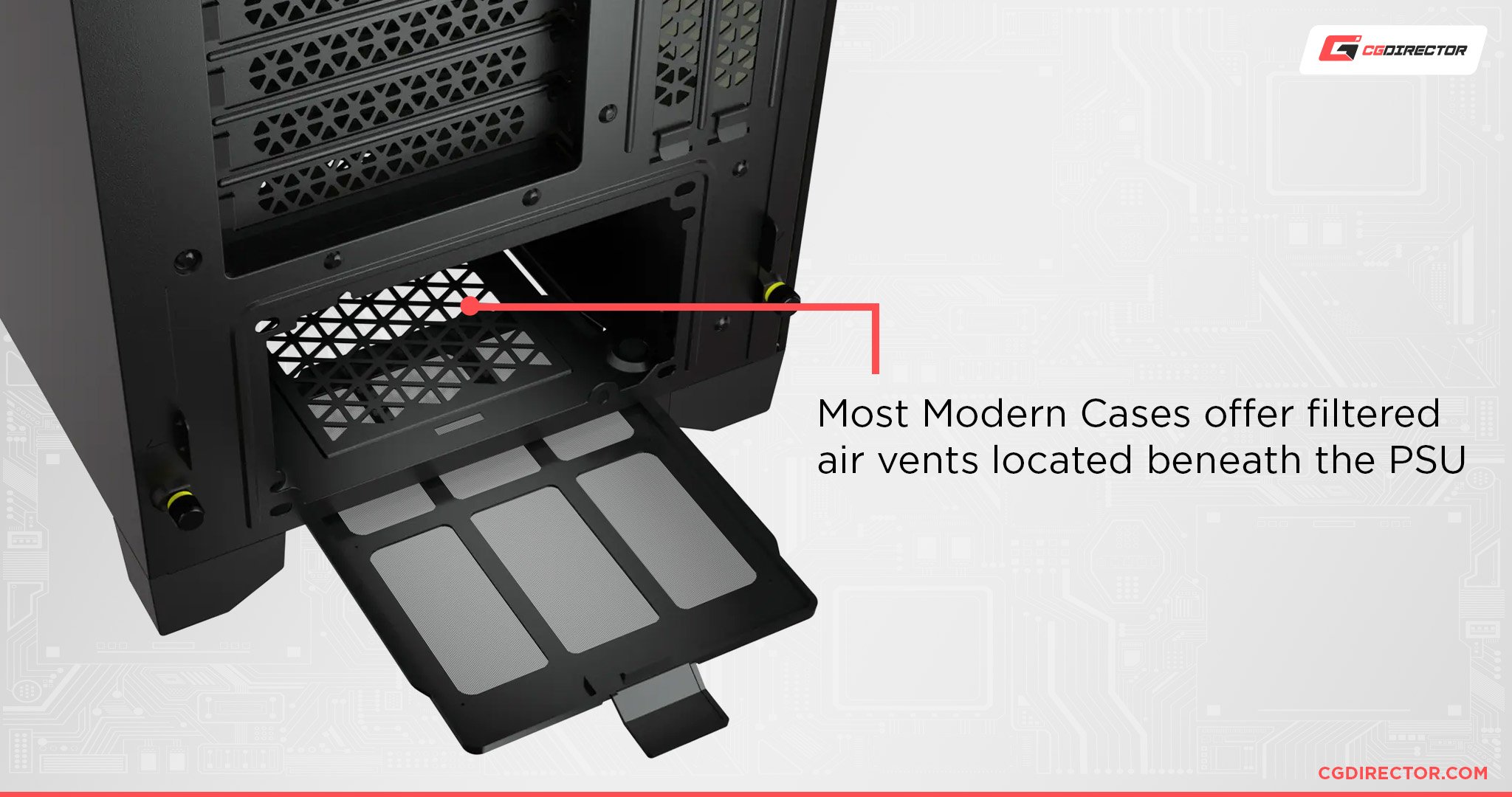
So having your PSU draw in fresh, cool air from the bottom is better for the PSU than drawing in the hot case air.
What I Recommend
There’s no one way that I can recommend for all use cases. Different cases have different needs.
But, most cases these days have ventilation areas at the bottom of the case. And as we’ve established, letting the PSU draw in cool air from the outside is better than letting it draw in the hot air from within the case.
So if you have a case with ventilation areas on the bottom, you should have your PSU fan facing down, drawing air from the outside.
If not, the only other option is to have it draw the air from within the case.
FAQ
How Hot Can a PSU Get?
It’s hard to say, it depends on a lot of factors. Everything from the temperature of the air going in, the power load you’re putting on it, the cooling within the PSU itself, etc.
But generally, PSU’s are rated to work around 40 to 60°C, anything over that is going into the red zone. Most PSUs from reputable brands working in relatively normal conditions should never go about 60°C.
If your PSU is going above 60°C, you should try to see if you can reorient it so that it can gain more air or add some case fans to increase the air circulation within your case.
But do not, at any point, open the PSU itself to “clean” or do any sort of maintenance unless you’re familiar with the internals of a PSU and know how to protect yourself — even then, it’s best not to. Any cleaning should be done from the outside.
Messing around with the internals of a PSU can lead to getting hurt or even death!
How Hot Is Too Hot for a PSU?
Anything over 80°C is far too hot for a PSU.
But it’s already getting bad by the time it gets to that point. So you should preferably try to keep your PSU below 60°C. That’s generally the operating temperature of most PSUs.
Is It Alright if PSUs Draw in Hot Air?
It’s not ideal, but if your PSU isn’t overheating, it’s fine. As long as your PSU is under 60°C, it can draw whatever air it wants.
Over to You
Hopefully, that answered all your questions about PSU positioning! As with everything, it’s more nuanced than one always being better than the other. It really depends on your case configuration as well.
Have any other questions about PC components? Feel free to ask us in the comments or our forum!
![PSU Fan Up Or Down? [All Possible Positions Explained] PSU Fan Up Or Down? [All Possible Positions Explained]](https://www.cgdirector.com/wp-content/uploads/media/2022/07/Should-the-PSU-Fan-Face-Up-or-Down-Twitter.jpg)

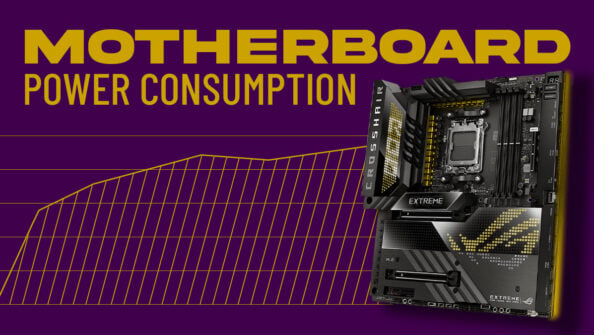
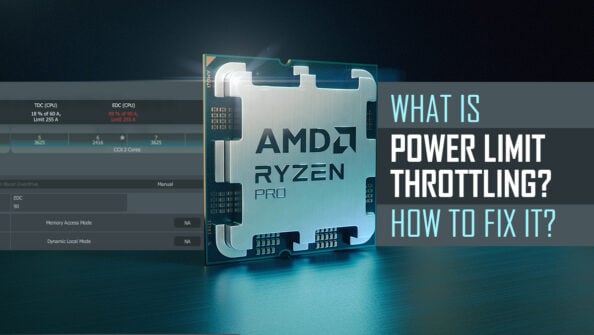
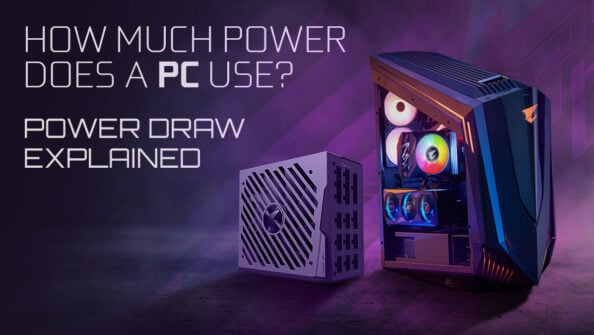

2 Comments
15 January, 2023
Thanks for the info. It was just what I was looking for.
30 August, 2022
Thanks, Mr Myth Buster!